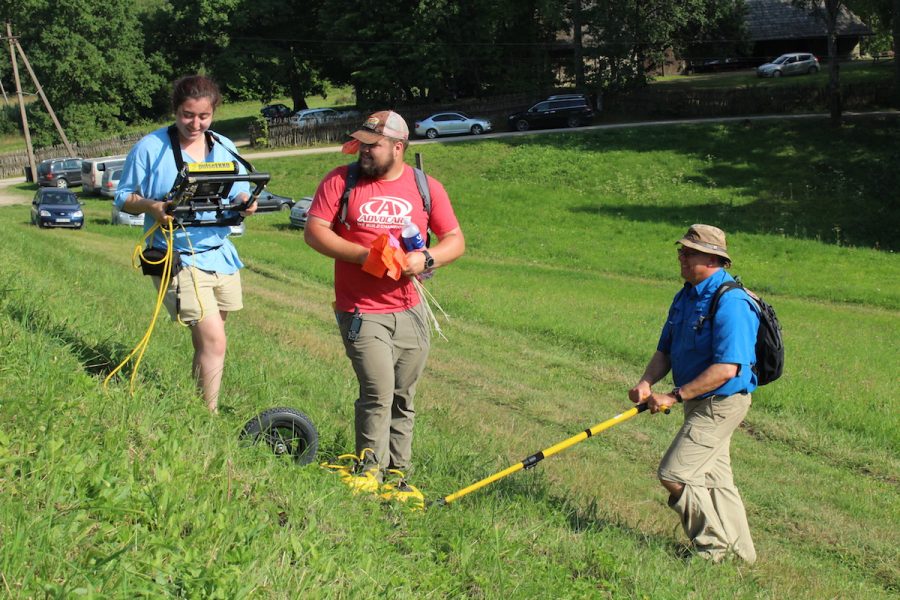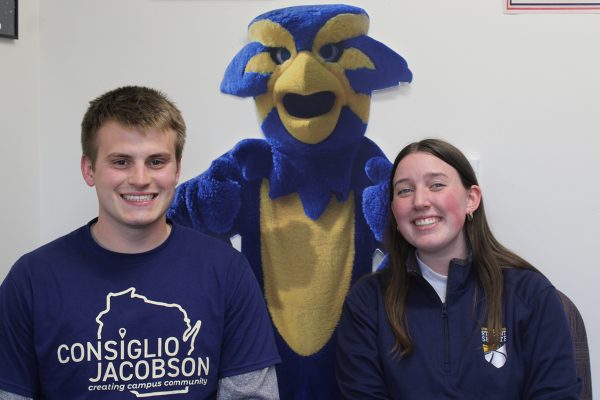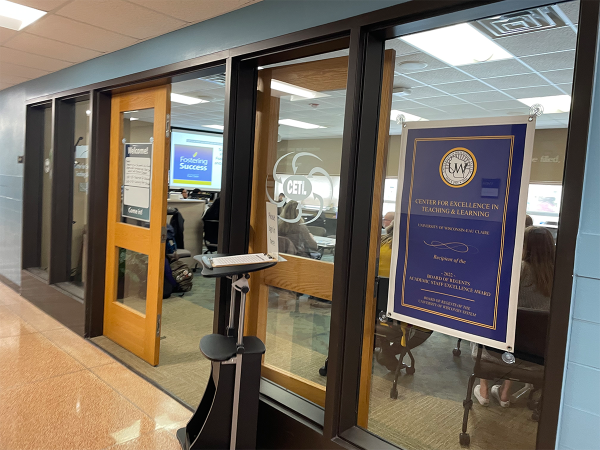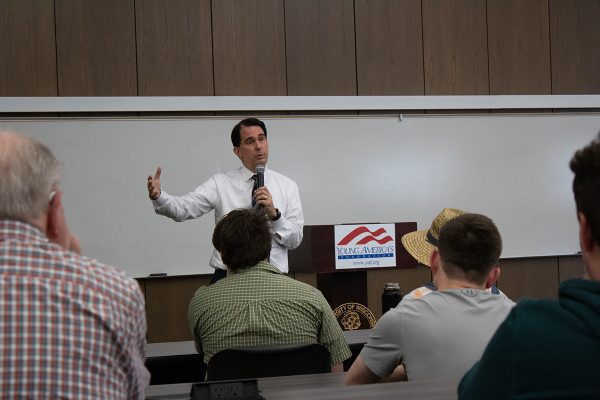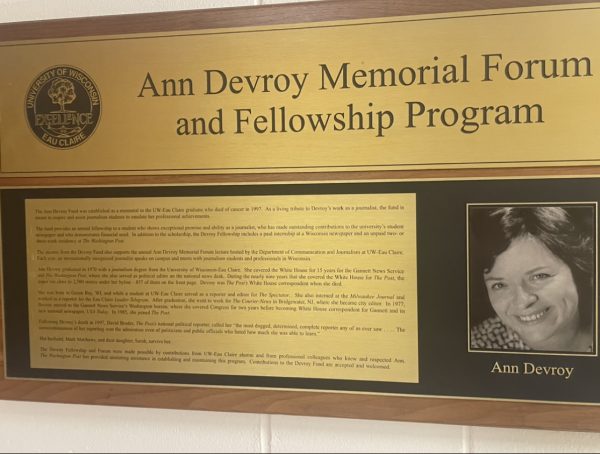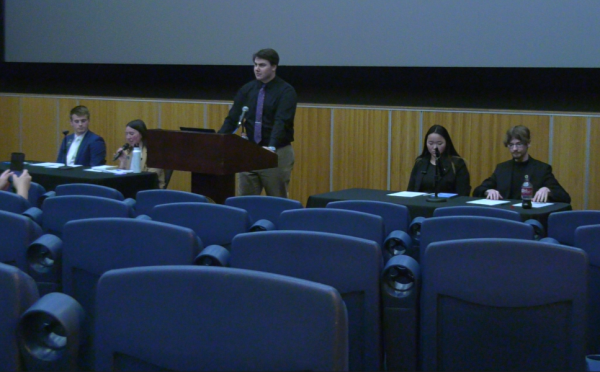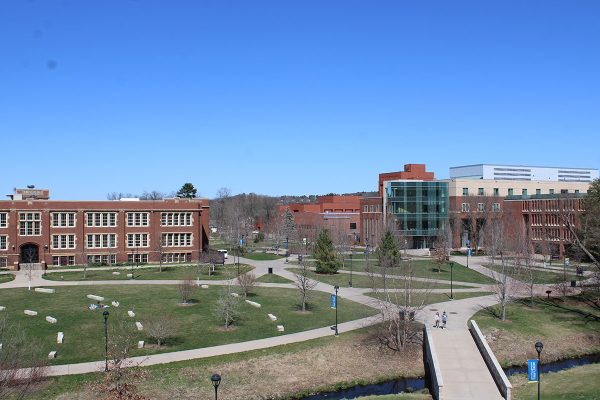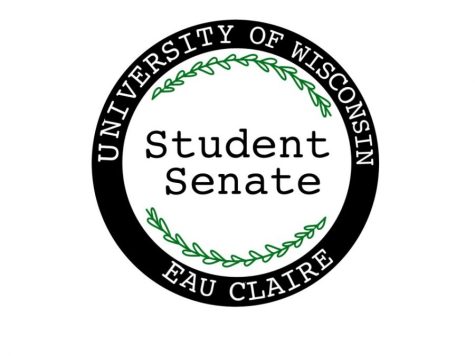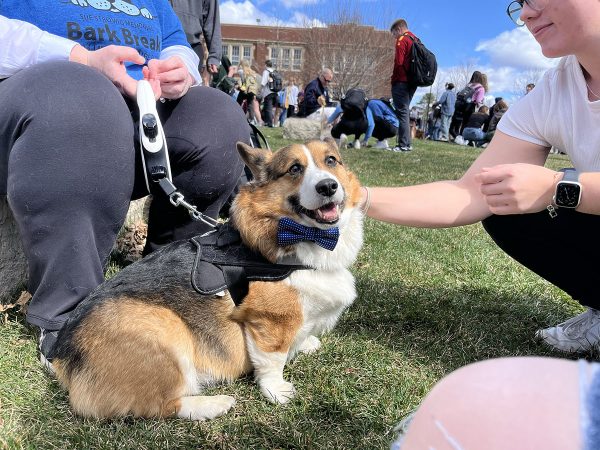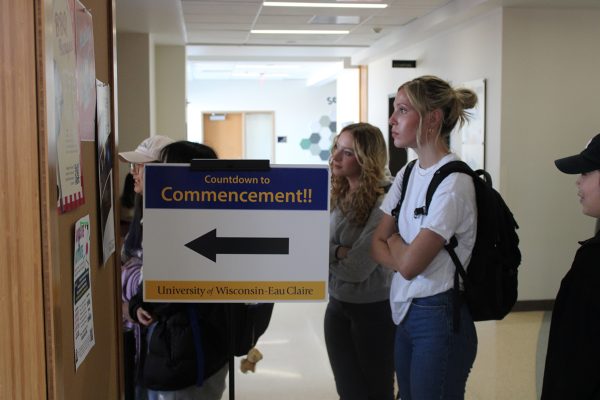Blugolds join international research team in Lithuania
UW-Eau Claire students spend three weeks conducting Holocaust research in Lithuania
Photo by Madeline Fuerstenberg
Kofman, Schneider and Jol used ground penetrating radar to examine the subsurface of the Bilioniai hill fort in Šilalė, Lithuania.
(Editor’s note: The author of this article was an active participant in the research being described)
From July 13 to Aug. 3, four UW-Eau Claire students traveled to Lithuania, where they joined an international research team tasked with investigating known and potential Holocaust sites around the country. This team — headed by Dr. Harry Jol of UW-Eau Claire’s Geography and Anthropology Department for the fourth year in a row — comprised students Joseph Beck, a senior environmental geography student, Sam Schneider, a senior geospatial analysis and technologies student, Chloe Kofman, a junior European history and Jewish studies student and Madeline Fuerstenberg, a second-year journalism student.
Upon arriving in Vilnius, Lithuania’s capital, the UW-Eau Claire team was joined by students and faculty from the University of Hartford and Duquesne University, including Dr. Philip Reeder of Duquesne and Dr. Richard Freund and Dr. Susan Cardillo of Hartford. They were also accompanied by government officials from both Lithuania and the United States, and various Lithuanian archaeological professionals.
While in Lithuania, the UW-Eau Claire team specialized in using ground-penetrating radar to examine the subsurface, searching for any abnormalities that may signify a disturbance in the stratigraphic layers of the earth, Jol said. Sites of interest included the suspected locations of mass graves, destroyed synagogues, ritual bathhouses and other structures that have been lost to time. A laser leveler was also used by the students to take topographical measurements of all the sites.
“It’s important that we document these sites in a variety of different ways,” Jol said. “These places can’t be excavated, and one of the ways to do that is through non-invasive imagery.”
According to Beck, Kofman and Schneider, some of the research conducted by the team included examinations of the decimated Great Synagogue of Vilna (Vilnius), the Bilioniai hill fort of Šilalė, a neolithic lake coast known as Gaigaline, the geomorphology of coastal sand dunes of the Curonian Spit National Park and various Holocaust-related sites around the Rokiškis region.
Rokiškis served as the primary focal point for a third of the trip. There, GPR was used to examine a site known as Olkin-Jofe. Matilda Olkin — known as the Anne Frank of Lithuania — and her family are suspected of being buried at this site following their execution in 1941 by Lithuanian militia of Nazi collaborators. This site will be the focal point of a documentary being produced by Cardillo and her team of film students. GPR sessions were also conducted at a suspected mass grave site called Trakas, the altar of St. Joseph’s Church, the site of a ritual bathhouse in the backyard of a small town resident and at the location of the former Rokiškis Manor House.
“I think what we were doing there is going to bring closure to the Lithuanian community after their own people murdered thousands of Jewish people who were their own neighbors,” Schneider said. “They wanted the Nazis to approve of what they were doing so (the Nazis) wouldn’t come there and just annihilate them all.”
All of the UW-Eau Claire team members stressed the importance of the work they had completed in Lithuania. As Jol explained, many of these small Lithuanian communities had entire Jewish populations wiped out completely during the Holocaust.
“There’s a history that has to go on — not just in Lithuania, but also in the U.S. — where we don’t know our own history of what happened in those areas.” Jol said. “It gets very emotional, because when you work in a site, you have some tie to the site, you’ve worked over top of the site, often you’re finding the burials — and that hits home.”
Beck, who had conducted research in Lithuania with Jol for the last two summers, stressed the cultural relevance of the work being done at Jewish mass burial sites. While GPR imaging can give researchers some idea of where mass graves are located, Jewish custom forbids the exhumation of human remains, making it very difficult to definitively confirm the presence of a mass grave, Jol explained.
“The local Lithuanian-Jewish community has a deeply-vested interest in locating where their relatives were killed, because graves in Jewish culture are very sacred,” Beck said.
Kofman pointed out the historic relevance of their work, saying how this research brings more prominence and clarity to Jewish and Holocaust history pertaining to Lithuania.
“It’s good that we’re finally starting to realize the actual scope of this complete nightmare, which affected so many people,” Koffman said. “It’s important that people know what really happened and how all these different places were affected, as opposed to just the places they come up with right off the top of their heads.”
The research conducted in Lithuania will be presented at various scientific conferences by the students, including venues like the annual Celebration of Excellence in Research and Creative Activity Fair.
Fuerstenberg can be reached at [email protected].
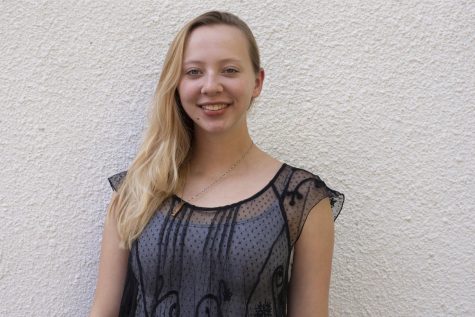
Madeline Fuerstenberg is a fourth-year journalism student. This is her eighth semester on The Spectator staff and she’ll miss it with all her heart once she graduates (if she graduates).

